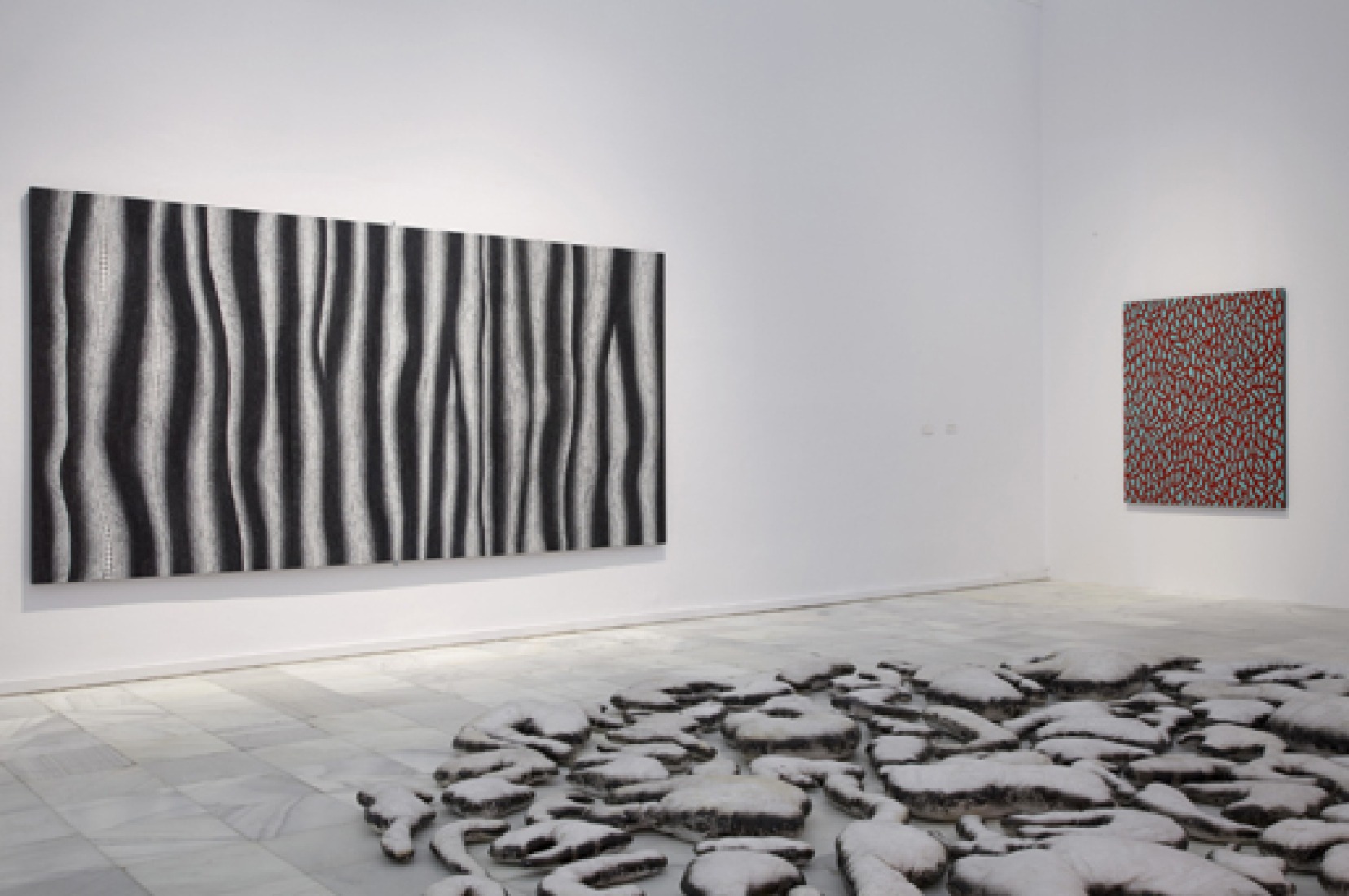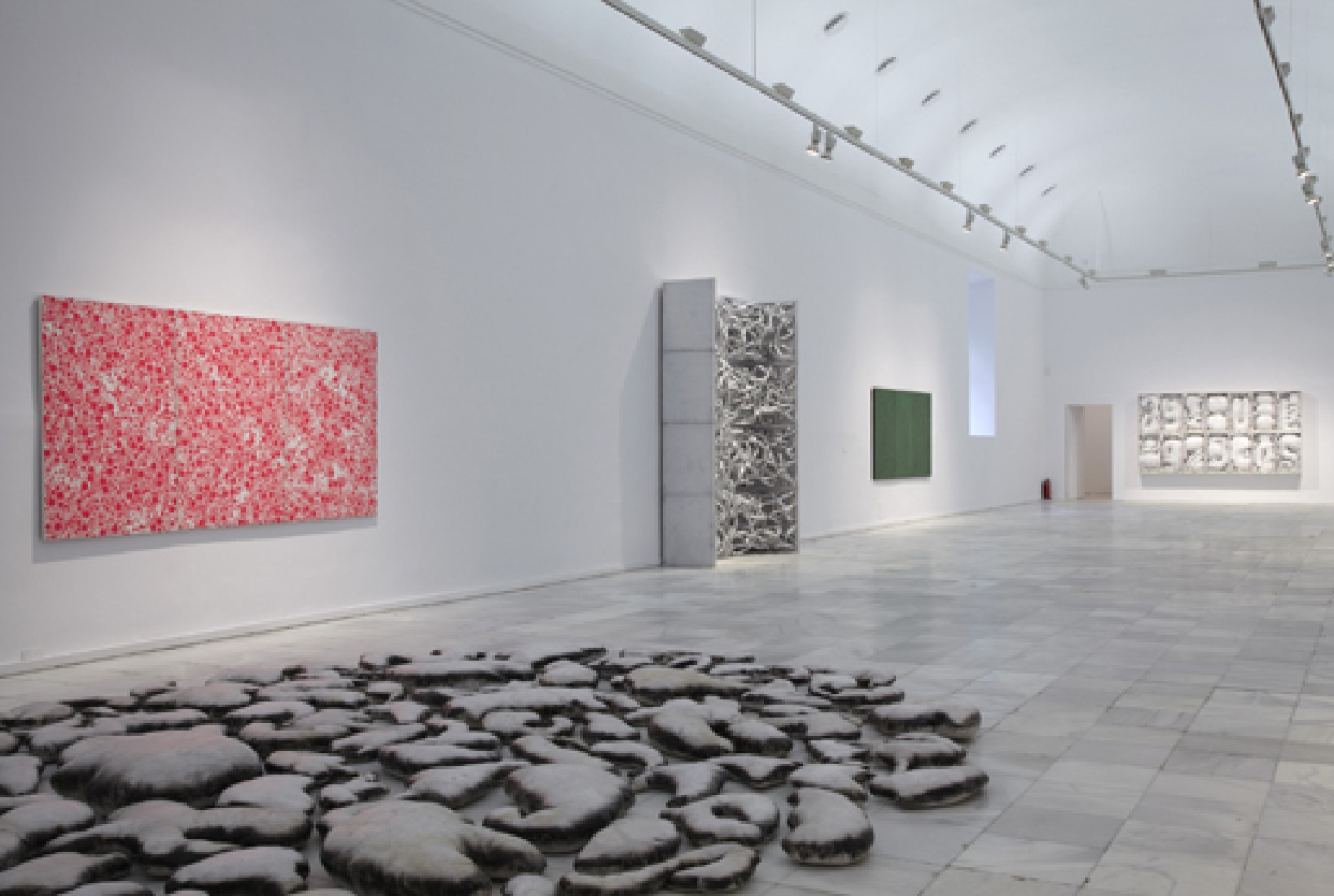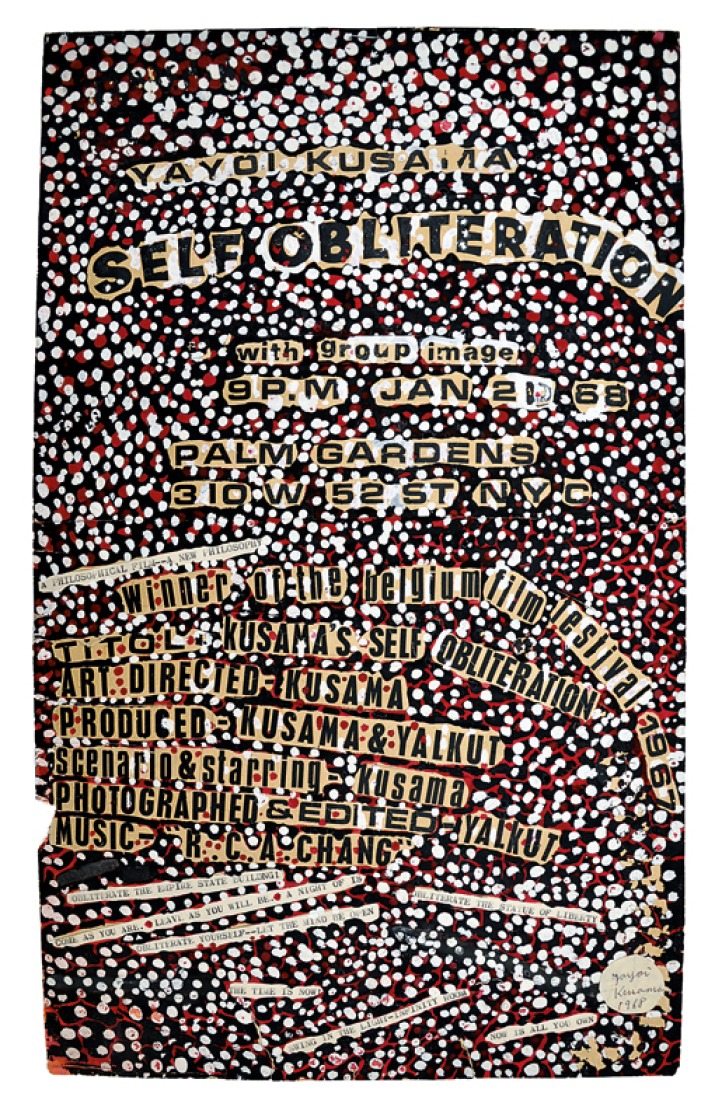The show takes the visitor in a journey through time to explore, in a series of “ambients”, Kusama’s body of work and her approach to different materials and techniques —drawing, painting, collage and assemblage, installation, film, performance, edition and design—. “This exhibition in focused on the moments when she worked for the first time with specific languages that are reflected exactly as they were when they appeared and absorbed the artist’s creative energy”, says Frances Morris, curator of the exhibition. The show also includes several large-scale installations like I’m Here, But Nothing (2000), or a new depiction of infinite space, according to the Japanese artist, in Infinity Mirrored Room – Filled with the Brilliance of Life (2011), a montage specifically designed for the occasion.
After the show in Spain, the exhibition will travel to other main international art centres: the Centre Pompidou in Paris (19 October 2011 – 09 January 2012), the Tate Modern in London (25 January – 27 May 2012) and the Whitney Museum in New York (June – September 2012).
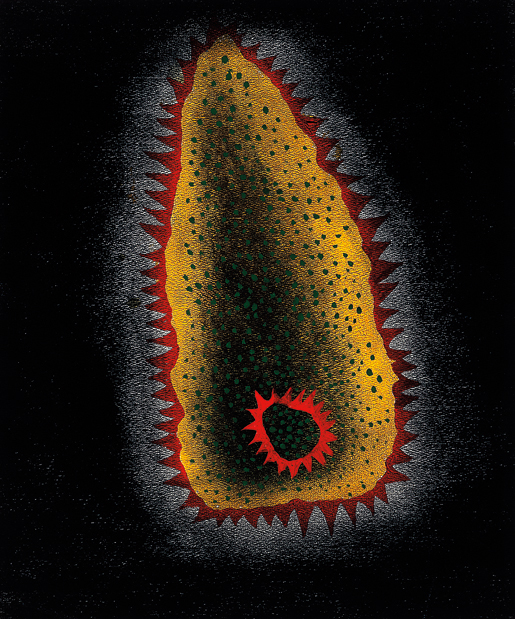
The Woman (La mujer), 1953. Pastel, tempera and acrylic on paper. 45,4 x 38,2 cm. The Blanton Museum (Texas, USA)
Museo Nacional Centro de Arte Reina Sofía. Madrid.
Dates: May, 10 – September, 12, 2011
Place: Museo Nacional Centro de Arte Reina Sofía Edificio Sabatini. 1st Floor (Sala A1)
Organización: Museo Nacional Centro de Arte Reina Sofía in collaboration with Tate Modern (London)
Curated by: Frances Morris
Coordinated by: Gemma Bayón
Itinerary:- Centre Pompidou, Paris (19-10-11 / 09-01-12) - Tate Modern, London (09-02-12 / 05-06-12) - Whitney Museum of American Art, Nueva York
(June– September 2012)
Related Activities: meeting about Yayoi Kusama with Frances Morris May 11, 2011, 19.30h
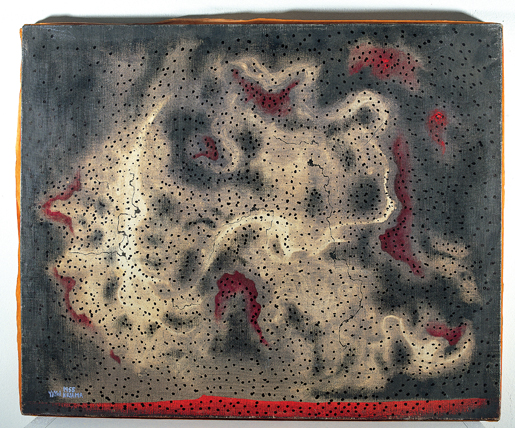
God of the Wind (Dios del vent), 1955. Oil on canvas. 51,5 x 64 cm. © Yayoi Kusama.
Exploring technique and matter: first paintings and works on paper
Kusama’s first paintings show the catastrophic state in which Japan was left after World War II, not only for its apocalyptic theme but also for the improvised use of materials. Facing the impossibility of getting oil paintings, Kusama experimented with home made paint mixed with sand and used seed bags taken from her parent’s business instead of canvases.
During the following years, Kusama kept on developing her techniques on paper, from which she created hundreds of works in the early 50s. She executed them using different techniques: ink, pastel, watercolours, wash and tempera, all of which give testimony of the constant exploration of shape and colour that the artist pursued. This works vary in their content, but often they include abstract shapes that evoke natural phenomena: eggs, seeds, trees and flowers....

Self-Obliteration No.2 (Auto-obliteración nº 2), 1967. Watercolor, pencil, pastel on paper photocollage. 40,4 x 50,4 cm. © Yayoi Kusama.
1960 – 1970: Infinity Net, Accumulation Sculptures and first collages
In the mid 50s, Kusama began to establish bonds with the United States, until finally, in 1958, she moved to New York. Like many other artists, she struggled to survive with small resources while gradually getting to exhibit her work. At the same time, she radically transformed her pictorial positions.
It was then when she started painting her famous Infinity Net, a group of large-scale canvases that openly show her creative process. The networks are composed of repeated versions of a unique and simple gesture: a subtle wrist movement by the artist, expressed through her brush like a painted arch. The constant uniformity of this gesture denotes both obsession and meditation. For her, networks and visible “points” between painted arches would become the key motifs of her personal image vocabulary.

Accumulation No.2 (Acumulación nº2),1962. Sofa, fabric filler, plaster and paint.
88,9 x 223,5 x 102,2 cm
Hood Musuem of Art, Dartmouth College, Hanover (New Hampshire). USA.
Just when she was beginning to enjoy some recognition for her paintings both in the States and Europe, Kusama changed her tactics again and started working in her first sculptures. Rooted in the obsessive technique of Infinity Nets, Accumulation Sculptures included everyday elements, covered by a proliferation of repeated shapes. In the first examples, Kusama recovered the surface of several domestic objects like furniture, clothes and accessories with multiple fabric phalluses, stuffed and sewn.
Accumulation Sculptures were shown for the first time in one of the first exhibitions of the blooming pop art movement, next to works by Andy Warhol, Claes Oldenburg, George Segal and James Rosenquist. .../...
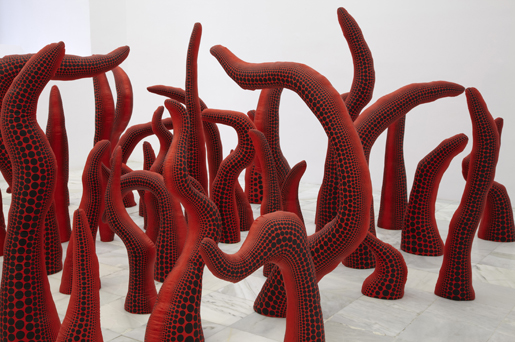
Room view, The Moment of Regeneration, 2004. Stitched fabric, polyurethane, wood and paint. Dimensions variable.
Photo: Joaquín Cortés / Román Lores.
Museo Nacional Centro de Arte Reina Sofia.
I’m Here, but Nothing (2000)
In the late 90s, after a parenthesis of almost thirty years, Kusama returned to creating large- scale installations. I’m Here, but Nothing (2000) is a darkened domestic interior with simple and anodyne accessories and furniture. The image of bourgeois stability that might arise from this scene becomes somewhat surrealistic and strange in Kusama’s installation. The fluorescent stickers that shine in the faint light cover the whole room and the furniture can be understood as a visual simplification of the artist’s hallucinating episodes.

Room view. Photo: Joaquín Cortés / Román Lores. Museo Nacional Centro de Arte Reina Sofia.
Late works
In the last few years, Kusama has returned with renewed enthusiasm to drawing and painting. Museo Reina Sofía displays for the very first time works created between 2009 and 2010, her largest series of paintings to this day. In these pieces there is a prominent presence of visual language that reminds us of her early paintings: repeated motifs such as flowers, eyes, hieroglyph self-portrait from the side and, as usual, dots and networks.

Installation view Infinity Mirrored Room filled with the Brilliance of Life, 2001.
Photo: Joaquín Cortés / Román Lores.
Museo Nacional Centro de Arte Reina Sofia.
The experience of infinite time: Infinity Mirrored Room – Filled with the Brilliance of Life (2011)
One of Kusama’s permanent obsessions is the depiction of infinite space. In her vast artistic career, the Japanese author has maintained her exploration of this field until achieving a magical effect in her Infinity Mirror Rooms. In 1965 she created the first large-scale installation, called Infinity Mirror Room – Phalli’s Field.
Infinity Mirrored Room – Filled with the Brilliance of Life (2011) is the name of the montage that Kusama has designed specifically for her exhibition at Museo Reina Sofía. Visitors can enter and explore it, surrounded by their own reflection.

